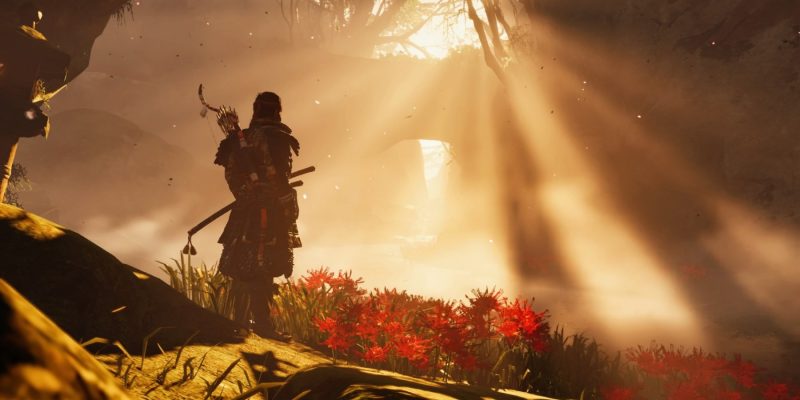The adventure-action video game developed by Sucker Punch Productions was released just three weeks ago, yet it has found itself with a mass following of gamers. We take a look into a war torn Japan during the late 12th century as this article highlights the real historical facts on which this thriller is based on.
Firstly, the characters in the game are completely fictional. There is no historical record of a man named “Jin” who led the Samurais against the invading Mongol warriors. Infact, it is not known that a particular person was responsible for the Japanese revolting against the foreign invaders during the attack on Tsushima.
In 1264, Kublai Khan, grandson of Genghis Khan ascended to the Mongol throne. For those unfamiliar with Mongol history, Gengis Khan was the first emperor of Mongolia who united nomadic Mongol tribes as one state and continued to expand their borders by conquering lands in central Asia and China, leaving many deaths and destruction at it’s wake. After his death, his successors continued to follow his dream of uniting the whole world under one flag and one ruler, which the Mongols believed was their duty from the heavens they were obliged to fulfill. Filled with ambition, Kublai’s focus turned to Japan in his mission to become the sole ruler of the face of the earth.
Japan first came into Mongol attention due to Japanese pirate raids on Korea directed from the Island of Tsushima between 1220 and 1260. During that time period Korea was facing Mongol raids and civil wars, and eventually became a Mongol state. With his sights set on taking over Japan, Kublai Khan sent emissaries to the Japanese government, stating many nations has bowed down to the great Mongol empire and they should do the same by willingly submitting to a Mongol rule and joining them in the quest of realising his grandfather’s prophecy. The Japanese responded to him by ignoring the letter.
Kublai took Japan’s response as an insult and dispatched 800-900 ships from Korea to Japan in November 1274. The war ships carried approximately 16600-40000 soldiers, which consisted of Mongols, Chinese and Koreans. The first Japanese territory to receive the invaders was Tsushima. The Samurai who were experts in archery slaughtered many of the advancing Mongol troops, but the Mongols managed to break the defensive line of archers and engaged in combat with the Samurai warriors. After a grueling battle, the defenders of Tsushima are defeated by the much larger Mongol army as it’s commander and warriors were left dead on the shores. The Mongols laid waste to the island, slaying citizens and burning buildings. The island of Iki was the second Japanese territory to face the Mongol raid and suffered a similar fate to Tsushima. After Iki, the Mongols set their sails towards the mainland.
On 19 November, the Mongol ships closed in on Hakata Bay as the warriors let out shrill war cries along with the ongoing beating of drums and gongs, a Mongol tactic used to scare their opponents as part of psychological warfare. Over 4500 Japanese soldiers looked on from the coast as the Mongol arrows came their way, killing many and injuring even more. The remaining had to face thousands of Mongol warriors who were jumping out of their ships and charging at them in full speed.
It seemed to be a no win situation for the Samurai warriors, who were outnumbered in both numbers and resources. The Mongols blasted the Samurai horsemen with gunpowder as the two armies met, in an attempt to penetrate the line of defence. The Mongol warriors who were clad in light armour swung their blades as they ran through the army of Samurais who were in heavy armoury. Each Mongol had a personal shield, whereas the samurai only used their sheilds as walls to protect archers. Eventually, the ruthless Mongols dominated the Samurais as the remaining Japanese were forced to flee inland. The Mongols then raided nearby coasts and proceeded to leave instead of pushing deeper into Japanese territory.
There are many reasons suggesting why the Mongols withdrew their fleet from Japan. It is said that a Mongol general by the name of Lui Fuxiang was killed by a Japanese arrow which convinced the army to turn back. Moreover, a storm is said to have wrecked some of the Mongol fleet and the demoralised warriors believed they lacked the strength and numbers to conquer the whole of Japan. It is also believed that the raid was merely the first wave before the actual invasion with a second wave soon to come.
In 1275, Kublai Khan once again sent emissaries to the Japanese government demanding them to bend to his will and pay tribute. This time, the Japanese responded viciously by beheading the Mongol ambassadors. Killing or hurting emissaries is considered very low and disrespectful throughout history, and by doing so the Japanese were sending Kublai a message meaning there will be no friendly negotiations between the two countries as it stands. A second embassy was sent in 1279 who also suffered the same fate. This convinced Kublai that to conquer Japan he must act by force.
In 1281, the Japanese got word that a second Mongol invasion force was coming their way, this time much larger than the first. The initial target was once again Tsushima as they sacked the island and sailed towards the Hakata Bay. The Japanese who were expecting a raid were well prepared with walls built around coastal areas. The Mongols who failed to breach the walls were taken by surprise when Samurais launched an attack on their ships in small boats under the cover of the darkness. They boarded the Mongol warships slaughtering a large number of attackers and set the vessels on fire before rowing back to land.
The stealth attack at night leaves the Mongols in a vulnerable position. However Mongol fleets fresh from a victorious conquest in southern China heads towards Japan, increasing the size of the army by three times. As the reinforcements arrived, the massive Mongol army dominated the brave Samurais in battle by taking advantage of the numbers game.
Outnumbered, the Japanese were forced to retreat, paving the way for the invaders to access the mainland. But just as Kublai Khan’s army sailed towards the heart of Japan, the horizon blackened and a huge storm overtook the bay. The Mongol ships were decimated as they were dashed against rocks and soldiers were thrown overboard. Surviving vessels of the most powerful empire in the world retreated immediately, abandoning the invasion. Japan was saved by a miracle.
The sun rises in Japan as it remains one of few countries to have withstood a Mongol invasion. Patrolling Samurais find thousands of Mongol soldiers washed up on Japanese beaches. Showing no mercy, they proceeded to execute every Mongol, Chinese and Korean they came across. However written evidence suggests that the Japanese spared the lives of Southern Chinese who fought against them since they considered them old allies and condemned them to slavery instead.
The story of the Mongol invasion of Japan is a unique chapter in the history of both countries, making it an ideal timeline to develop an action-adventure video game based on medieval times. With the release of similar games such as Assassin’s creed Valhalla by Ubisoft during this year, real historical events continue to intrigue gamers.














 in #Thiladhunmathi
in #Thiladhunmathi
Comments